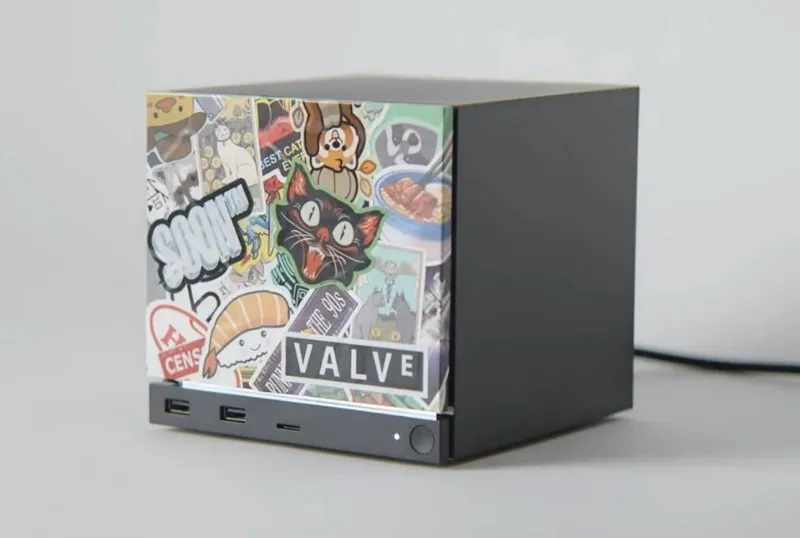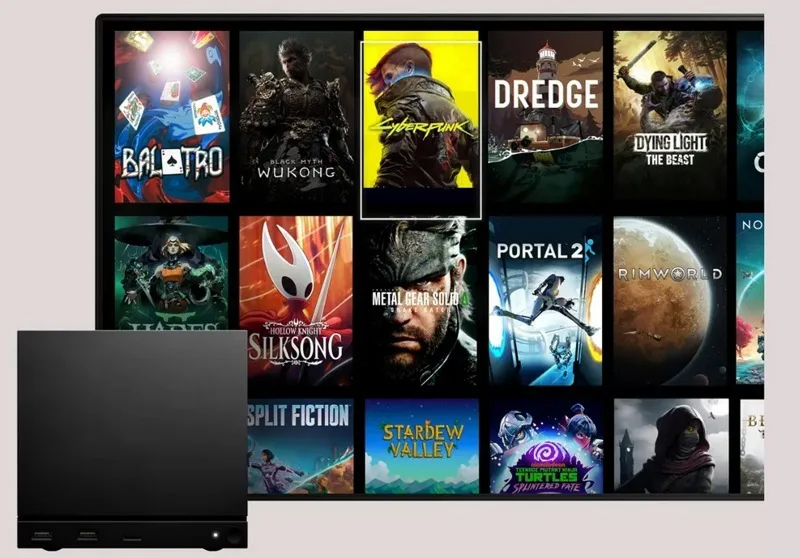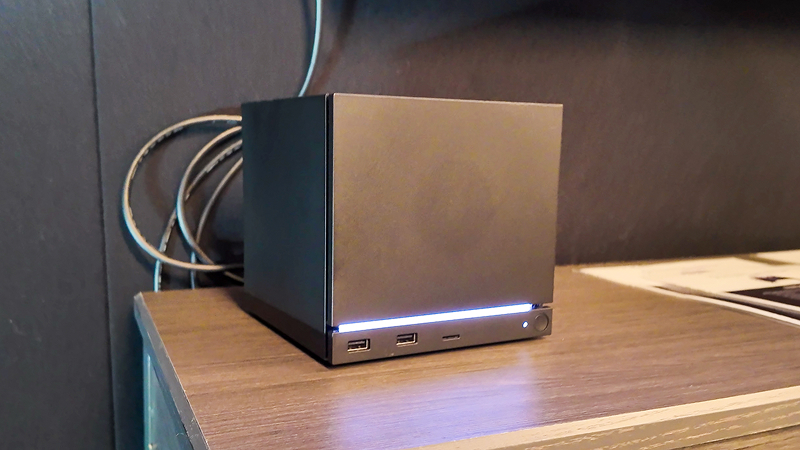The Return of the Steam Machine
Valve has decided to relaunch the Steam Machine concept, turning it into a full-fledged high-performance mini-PC based on SteamOS. While the first version never found its place on the market, the new device became a logical evolution of the Steam Deck concept, preserving console convenience while delivering true desktop-level performance.
Processor and Memory
Inside is a six-core AMD Zen 4 processor with 12 threads and boost frequencies up to 4.8 GHz, all within a modest 30 W TDP. It is paired with 16 GB of DDR5 and an NVMe SSD — 512 GB in the base configuration or 2 TB in the top version. The M.2 2230 drive can be replaced, as can the SO-DIMM RAM, but doing so requires a full disassembly of the device.

Discrete Graphics Card
The main feature of the new Steam Machine is its discrete GPU. Valve uses a custom AMD chip based on the RDNA 3 architecture with 28 compute units and 8 GB of GDDR6. The GPU clocks up to 2.45 GHz with a 110 W TDP. In terms of graphics performance, the system is close to the mobile Radeon RX 7600M and noticeably outperforms everything offered by other compact gaming PCs.
Performance
According to engineers, the device is roughly six times more powerful than the Steam Deck and can run modern games in 4K with FSR. In Cyberpunk 2077 tests, the console shows stable performance; however, for higher FPS, it’s better to lower the resolution to 1080p.

SteamOS and Compatibility
The system runs on SteamOS — a Linux-based platform familiar from the Steam Deck. The interface and features are fully identical, and compatibility with Windows games is ensured by Proton, which has been refined over the years to high stability. Issues remain only with certain titles using anti-cheat. If the user wishes, they can install Windows 11 — the Steam Machine remains a full PC.
Chassis and Cooling
The case is designed as a compact cube roughly 16 cm tall. Cooling is handled by a large shared heatsink and a quiet 120 mm fan. According to journalists, the system is nearly silent even under load. The front panel is removable — Valve offers customization options including wooden faceplates and versions with an E Ink display. There’s also a customizable LED strip.

Ports and Connectivity
The 200 W power supply is integrated into the bottom of the chassis. On the front panel are two USB 3.0 ports and a microSD slot; on the back — two USB 2.0, USB-C (10 Gbit/s), and Ethernet. The wireless module includes Wi-Fi 6E and Bluetooth, with four antennas provided: two for Wi-Fi, one for Bluetooth, and one for connecting up to four Steam Controllers without an adapter.
Availability
The Steam Machine will go on sale in 2026 in all regions where the Steam Deck is available — the US, Europe, Japan, South Korea, Australia, Taiwan, and others. Prices have not yet been announced, but it is expected that the base model will be made as affordable as possible.
